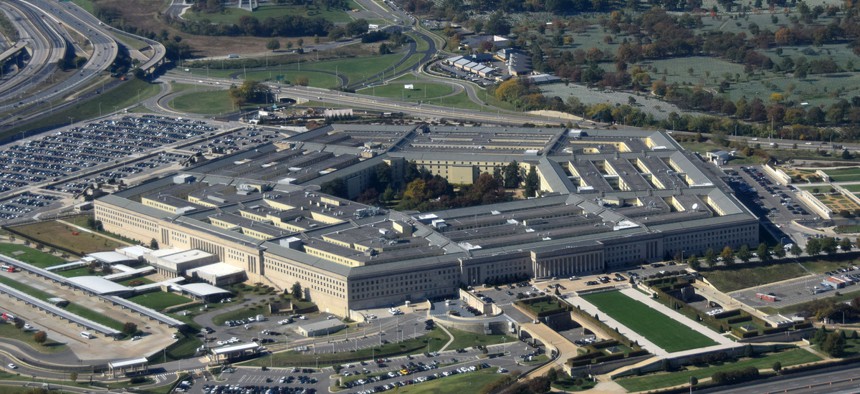Pentagon Pushes for Speed in Cloud Strategy

Ivan Cholakov/Shutterstock.com
The Defense Department expects multiple providers to support the different kinds of clouds of its missions.
Amid two high-profile, multibillion cloud procurements, the Defense Department released its cloud strategy Monday, laying a path forward for how the military branches and Pentagon components will adopt cloud technology.
Key aspects of the strategy are the Pentagon’s desire for both speed in adopting cloud and support from multiple cloud providers. The strategy also takes a “warfighter first” approach—cloud solutions must be built “in a manner that never puts the warfighter at risk”—and emphasizes lethality.
The department will embrace a few types of clouds: general purpose clouds, fit-for-purpose clouds and internal clouds. The department’s Joint Enterprise Defense Infrastructure program, for example, will serve as a general cloud available for large-scale computing. MilCloud 2.0 is considered a fit-for-purpose cloud, though the strategy states such clouds will need authorization and to operate with the department’s general purpose clouds. Internal clouds would host items such as office tools.
“At all times, [Defense Department] needs to ensure that cloud is addressing the needs of improving military lethality,” the strategy states. “By constantly challenging itself around lethality with red teams, [Defense Department] can ensure that the cloud will be positioned to support the challenges of the global environment.”
The strategy makes clear that while the Pentagon will retain some traditional data centers, only cloud computing will “enable the department to harness the full power of its data and information systems.”
Cloud will be the default for storing, accessing and processing data, apps, programs and other IT services, and will “lay the foundation for the Defense Department to accelerating AI and machine learning capabilities,” according to a Pentagon press statement.
"This marks a milestone in our efforts to adopt the cloud and also in our larger efforts to modernize information technology across the Defense Department enterprise," Defense Department Chief Information Officer Dana Deasy said in a statement. "A modern digital infrastructure is critical to support the warfighter, defend against cyberattacks and enable the department to leverage emerging technologies like machine learning and artificial intelligence."
Cloud will be more important than ever in the coming year for the Pentagon. The Pentagon recently released a draft solicitation for its multibillion Defense Enterprise Office Solutions contract, while bids for its $10 billion JEDI contract are under evaluation. Contracting experts at Deltek also predict 2019 will be the first year the Defense Department spends more than $2 billion on cloud computing.



